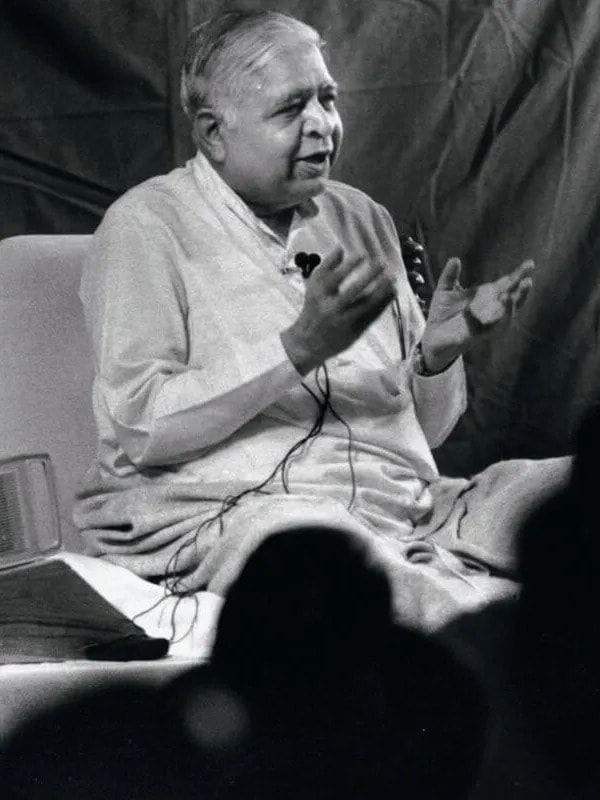Satya Narayana Goenka
|
Although Indian by descent, he was born and raised in Burma. While living in Burma he had the good fortune to receive training in vipassana from his teacher Sayagyi U Ba Khin for 14 years. Mr Goenka settled in India and began teaching Vipassana in 1969. Over a period of almost 45 years, Mr. Goenka and the teachers appointed by him taught hundreds of thousands of people in courses in India and other countries, East and West. Today, meditation centers established under his guidance are operating in Asia, Europe, the Americas, Africa and Australia.
The technique taught by S.N. Goenka goes back two and a half millennia to the Buddha. The Buddha never taught a sectarian religion; he taught Dhamma – the way to liberation – which is universal. In the same tradition, Mr. Goenka's approach is totally non-sectarian. For this reason, his teaching has had a profound appeal to people of all backgrounds, of every religion and no religion, and from every part of the world. Mr. Goenka was the recipient of many awards and honors in his lifetime, including the prestigious Padma Bhushan Award from the President of India in 2012. This is one of the highest civilian awards given by the Indian Government. Satya Narayan Goenka breathed his last in September 2013, at the age of 89 leaving behind an imperishable legacy. |
diversity
|
Cultural Diversity
Dhamma Khetta, welcomes people from all backgrounds, cultrues and religions to our courses. Despite our diverse beginnings and our unique lives, when we come to a Vipassana course we are united by a common cause, a common purpose—to solve the mystery of human suffering. |
Non-sectarian Program
This teaching which comes from Gotama the Buddha, is taught in a non-sectarian format. The Buddha was not interested in converting people. He had found that cause of suffering lies within each of us and one needs to look inside to find its solution. This works for all regardless of their origin or traditions |
Gender Diversity
The campuses at all the meditation centers in this tradition are separated into male and female sides. This extends to the residential accommodations, the walking areas, the dining rooms and the meditation hall. This structure is designed to reduce the tension that derives from the mixing of genders. |
|
Physical Health Needs
Some applicants have special requirements due to health issues, physical limitations, pregnancy etc. Describe your special needs in the application at “Anything to you wish to add ?" column. We will call you to discuss your needs. We can supply back support or chairs for meditation for those who need it. |
Languages
On every course we have many students whose native language is not English. Course materials are available in almost 50 languages and some courses are even bi-lingual. If English is not your native language then someone from the center will contact you to see how we can accommodate you. |


